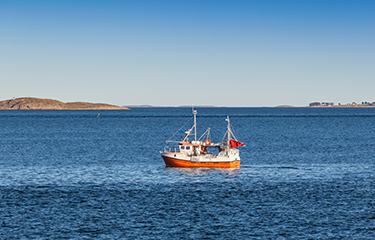The Global Seafood Alliance (GSA) and the Responsible Fisheries Management (RFM) certification program have agreed to a memorandum of understanding with the goal of reducing certification costs and promoting market options for certified seafood.
Both entities will remain separate in regards to ownership, communications, and funding. But the agreement will result in a reduction of the number of audits required and number of certification bodies needed to certify GSA and RFM standards, according to Global Seafood Alliance CEO Brian Perkins.
“The overall goal is to provide alternatives in the marketplace for assurances and to rationalize as much as possible, to make it simpler for people to become certified. Which is not to say lessen the standards, but allow people to be able to get more for less. Reduce audit fatigue and just provide an opportunity for companies to come forward and do something in which most of them want to do in one fashion or another and just needed the opportunity [to do],” Perkins said.
Portsmouth, New Hampshire U.S.A.-based GSA is a global non-govermental organization dedicated to advancing responsible seafood practices through its Best Aquaculture Practices (BAP) and Best Seafood Practices (BSP) standards. BAP certifies aquaculture operations from hatcheries, to farms, feed, and processing plants. BSP ensures seafood processing plants and fishing vessels apply best practices to seafood and working conditions
“Our seafood-processing standard has four pillars. The environmental, social, food safety, and in the case of aquaculture, animal welfare. We’re the only processing standard in seafood that does that so, a plant might be having a BRCGS food safety audit, then a SMETA or another social audit, and then a third environmental audit, which they will then have a chain of custody. That’s four separate audits, which means four separate auditors, four separate weeks of work to build up to that audit versus using the RFM standard for the fishery and our standard for the plant,” Perkins said. “We cover off the box and there are many of our endorsers, including Walmart, who's accepting our food-safety component as meeting their food-safety requirements, and our social component as meeting their social requirements. That’s how you consolidate and make it easier, cheaper, because instead of doing four weeks’ worth of work, you're doing one or two weeks’ worth of work or less.”
According to Perkins, the collaboration aims to increase responsibly sourced seafood by simplifying the cost process by covering both “below the water” (RFM) and “above the water” (GSA) operations without creating a new standard in both groups.
RFM Program Manager Jeff Regnart said the MoU will help companies and fisheries streamline their certification process.
“From a wild-capture standpoint, we can go in and certify a fishery. Once that fishery is certified, then it's about the products coming out of that and the processing plants that those products go through, as well as the social and other audits associated with the plants. GSA is well-known to cover that. And once you get out of the plant, we've got [chain of custody] if you want to be able to logo that product and move out in the market with a sustainability-type logo. Just talking about wild-capture, we can cover from the fishery to the end consumer and all those steps along the way with a one-stop shop. You can come to us collectively and be able to have a fishery certified and know that you're going to have a product on that plate that tells that sustainability story. All those steps along the way, including social through their [GSA’s] plant standard will be covered. There’s nothing like it globally currently,” Regnart said.
RFM is a third-party certification program, headquartered in Juneau, Alaska, U.S.A. for wild-capture fisheries. The certification program includes a fisheries standard certifying origin and sourcing of sustainable seafood and a chain of custody certification recognizing compliance in traceability procedures of a seafood product back to an independently-assessed fishery.
The MoU will make the cost of certification less expensive through the sharing of certification bodies through dual accreditation for RFM and GSA certifications.
“We share several [certification bodies] now and the idea is to share all of them. That's good for companies to do that because they have a familiarity with the same entity, [the] same auditors," Regnart said. "This will align so you could use a single [certification body] for everything. And right now, that is not possible outside of this relationship.”
RFM's goal is global recognition of its certification, and it is working to expand beyond its current status as regional program in North America, according to Regnart. GSA has more than 3,000 certified facilities throughout the world between its Best Aquaculture Practices (BAP) and Best Seafood Practices (BSP) standards. GSA does not offer a chain of custody standard or separate wild-fishery standard. The collaboration demonstrates GSA’s support for responsible certification in those categories through RFM’s standards that are GFSI-benchmarked, Perkins said.
“In the case of GSA, we don't have a chain of custody standard. We've never felt the need to develop one, but we are now getting requests more and more for that and so part of this MoU, we hope to develop relationships so that we can utilize the RFM chain of custody standard for those people who just want the chain of custody standard. So again, rather than reinventing the wheel, and creating yet again another option, we're looking at making best use of what already exists,” Perkins said.
Regnart said it has been a long but fruitful process to bring the two organizations together, which included a willingness from those in each organization to learn about the different ways each group operates and to build common trust. The discussions that led to the MoU began years ago, when GSA was still the Global Aquaculture Alliance.
“Part of this is possible because both programs have a similar approach when it comes to logo. The logo calls out origin and there's no there's no costs associated with using a logo. And so being able to work together immediately became easier, because neither one of the two programs here are reliant on their logo being out in the marketplace to generate revenue. That's something we don't talk much about, but it's very real,” Regnart said.
Perkins said, despite controversy, eco-labels are still vitally important for both end-consumers and the seafood industry itself.
“In the case of BSP, the logo is [awarded] if the fish is being sourced from a GSSI-benchmarked fishery, and the processing plant is certified to the SPS standard. So again, those four pillars, then you can use the BSP logo if you choose to.” Perkins said. “And I think one of the things that was particularly interesting is the way RFM designed their logo and the opportunity to include provenance in the logo itself. It’s not only important to the fisheries and like organizations, but also to the consumer. The consumer wants to know where their fish is coming from these days, more than ever.”
Photo courtesy of Evannovostro/Shutterstock







